
How to Set Up Bank Feeds With Quickbooks Desktop
 If you use Quickbooks Desktop to keep track of your business’s financial records, you should consider setting up Bank Feeds. Exclusive to the desktop version of Intuit’s popular business accounting software, Bank Feeds will automatically connect your business’s bank accounts to Quickbooks so that you can easily monitor and record transactions. While there’s no rule stating that you must use this feature, enabling it is a great way to save time and improve productivity.
If you use Quickbooks Desktop to keep track of your business’s financial records, you should consider setting up Bank Feeds. Exclusive to the desktop version of Intuit’s popular business accounting software, Bank Feeds will automatically connect your business’s bank accounts to Quickbooks so that you can easily monitor and record transactions. While there’s no rule stating that you must use this feature, enabling it is a great way to save time and improve productivity.
Check to See If Your Bank Is Compatible With Quickbooks Bank Feeds
To get started, you’ll need to check and see if your bank is compatible with Quickbooks Bank Feeds. This is done by logging in to your Quickbooks account and accessing Banking > Bank Feeds > Participating Financial Institutions. From here, you should see a long list of compatible banks located in the United States as well as Canada. There are more than 1,400 banks that support Bank Feeds, so scroll through the list to see if your bank is listed.
Connecting Your Bank Account
Quickbooks currently supports two different methods of connecting your bank account: Direct Connect and Web Connect. With Direct Connect, Quickbooks will automatically send information to your bank, and it will automatically download data from your bank. To use Direct Connect, you’ll need to enter the PIN or password associated with your bank account. Once you’ve set up the account, you’ll be able to download bank statements directly to your Bank Feeds in Quickbooks. Furthermore, Direct Connect allows you to use other financial-related services in Quickbooks, such as online vendor payments and account transfers.
Alternatively, you can use Web Connect to connect your bank account to Quickbooks. However, this method only allows Quickbooks to receive bank data through your web browser. This means you won’t be able to send payments to vendors or transfer funds — at least not directly from your bank account.
It’s important to note that you may incur fees when using either Direct Connect or Web Connect. Quickbooks doesn’t necessarily charge business owners for using these features. However, many banks charge fees to customers for internet-based data services like these. If this is your first time attempting to use these services, it’s recommended that you check with your bank to see what, if any, fees they charge. There’s nothing worse than being hit with an unexpected fee simply for accessing your bank information online.
Have anything else that you’d like to add? Let us know in the comments section below!

What Is Single-User Mode In Quickbooks?
 In Quickbooks, you can switch between two different user modes: single or multi. Although they both allow you to perform basic accounting tasks, there are some key differences between the two modes that shouldn’t be ignored. Therefore, it’s important for business owners and accountants to familiarize themselves with single-user and multi-user mode. Only then will you be able to take full advantage of Intuit’s popular, award-winning accounting software.
In Quickbooks, you can switch between two different user modes: single or multi. Although they both allow you to perform basic accounting tasks, there are some key differences between the two modes that shouldn’t be ignored. Therefore, it’s important for business owners and accountants to familiarize themselves with single-user and multi-user mode. Only then will you be able to take full advantage of Intuit’s popular, award-winning accounting software.
Single-User vs Multi-User Mode: The Basics
The primary difference between single-user and multi-user mode in Quickbooks, as you may have guessed, is that the former prevents anyone else from accessing your Quickbooks company file at the same time that you access it. If you are logged in to Quickbooks and viewing or otherwise accessing your company file, anyone else who attempts to access your company file will be blocked — at least until you log out. In comparison, multi-user mode allows multiple people to log in and access your company file. It’s typically used by large businesses where multiple executives, accountants and other workers need to record financial transactions.
It’s important to note that some Quickbooks activities can only be performed single-user mode, whereas others can be performed in either single-user or multi-user mode. If you want to create a portable company file, for example, you’ll need to log in to Quickbooks using the single-user mode. Quickbooks prohibits users from creating a portable company file in multi-user mode. The same applies for rebuilding data — you’ll need to use the single-user mode to rebuild data in Quickbooks.
How to Switch Between Single-User and Multi-User Mode
Now that you know the differences between single-user and multi-user mode in Quickbooks, you might be wondering how to switch between these two different modes. Well, it’s actually a quick and easy process. To switch between single-user and multi-user mode, simple log in to the main Quickbooks interface, at which point you can click the “File” tab at the top of the page, followed by “Switch to Single-user Mode” or “Switch to Multi-user Mode.”
You can learn more about single-user and multi-user mode by searching for “single-user” or “multi-user” in the Quickbooks search bar. This should bring up a Quickbooks help article with information about the two modes and how they differ. As previously stated, though, the primary difference is that single-user mode prevents anyone else from accessing your company file at the same time you access it.
Have anything else you’d like to add? Let us know in the comments section below!

Understanding Assets on Your Quickbooks Balance Sheet
 In Quickbooks, a balance sheet is an essential component of your business’s financial records. This document features two columns, one of which is a list of assets, whereas the other is a list of debt and liabilities. Analyzing your business’s balance sheet can help you understand the true value of your business. If your business’s debt and liabilities are greater than its assets, for example, it indicates a low (or no) value. But what exactly constitutes an “asset” on a balance sheet?
In Quickbooks, a balance sheet is an essential component of your business’s financial records. This document features two columns, one of which is a list of assets, whereas the other is a list of debt and liabilities. Analyzing your business’s balance sheet can help you understand the true value of your business. If your business’s debt and liabilities are greater than its assets, for example, it indicates a low (or no) value. But what exactly constitutes an “asset” on a balance sheet?
Cash
Cash on your business’s balance sheet refers to money in hand, deposits in bank accounts and any short-term investments that you can easily convert into cash.
Securities
Securities on your business’s balance sheet include market securities like stocks, bonds, certificates and other investments that you can easily trade.
A/R
While most business owners are familiar with cash and securities, many are confused when they see “A/R” listed on their balance sheet. A/R refers to accounts receivable. Not to be confused with accounts payable, accounts receivable is money owed to your business by a customer, client, vendor or any other party. Many businesses allow their customers or clients to pay after their product has been delivered or service has been completed. Until the customer or client pays the required amount, the transaction is considered A/R. If your business has significant money tied up in A/R, you should follow up with customers or clients on a regular basis to request payment.
Inventory
As the name suggests, inventory on your business’s balance sheet refers to tangible equipment, products, goods and other items that you can sell. Inventory is considered an asset because of its monetary value. You can essentially sell inventory to turn it into cash, thereby making it an important asset for many businesses.
Prepaid Expenses
Finally, prepaid expenses on your business’s balance sheet are ongoing, regular expenses needed to conduct your business’s operations. According to Intuit, insurance is a common type of prepaid expense incurred by many businesses. When a business purchases insurance, it must record those insurance payments as prepaid expenses on its balance sheet.
It’s important to note that there are also property and intangible property assets on balance sheets. These two assets, however, are considered non-current assets, whereas the other assets described in this blog post are considered current assets.
Have anything else that you’d like to add? Let us know in the comments section below!
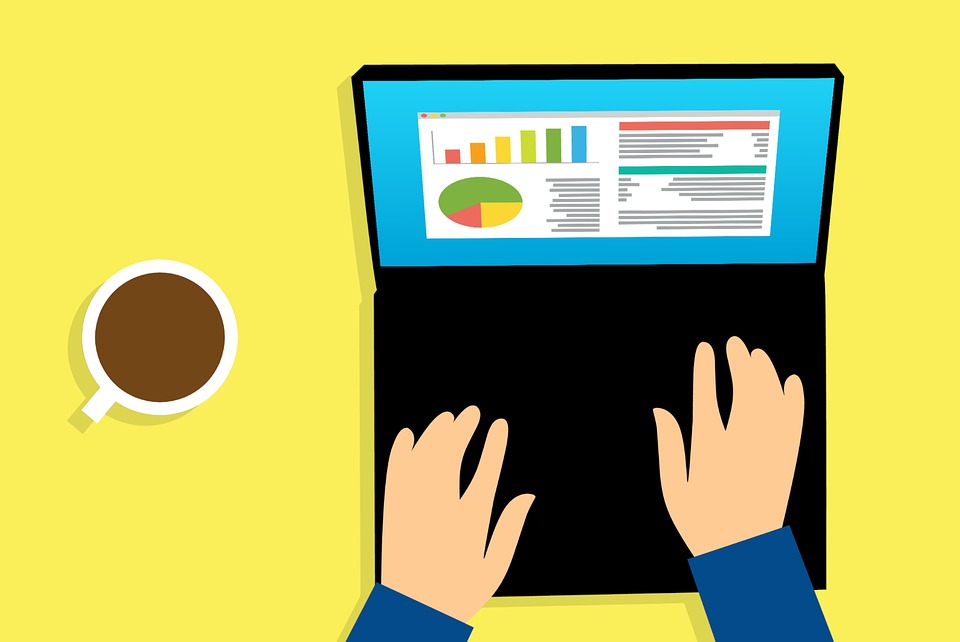
What Are Classes in Quickbooks?
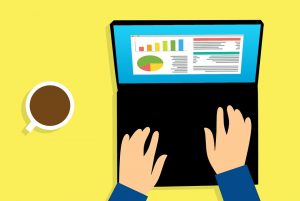 No, a Quickbooks “class” isn’t a training course where you learn how to use Intuit’s popular accounting software. Although this would make sense, classes in Quickbooks actually refer to something entirely different. So, if you’re planning to use Quickbooks to keep track of your business’s financial transactions, it’s important to familiarize yourself with classes. Only then will you be able to use this feature.
No, a Quickbooks “class” isn’t a training course where you learn how to use Intuit’s popular accounting software. Although this would make sense, classes in Quickbooks actually refer to something entirely different. So, if you’re planning to use Quickbooks to keep track of your business’s financial transactions, it’s important to familiarize yourself with classes. Only then will you be able to use this feature.
Class Tracking: The Basics
Classes are used to track transactions based one on or more criteria. If you operate a business with multiple locations, for example, you can create a class for each unique location. This way, you can see exactly how many sales one store generated compared to other stores. Class tracking is a relatively simple feature that opens up a world of new possibilities with Quickbooks. In addition to tracking by location, you can use classes to track transactions by account balances, bills and other factors.
Keep in mind that you aren’t required to use class tracking in Quickbooks. On the contrary, most small businesses owners never use this feature. But if you need to separate the financial metrics of some transactions from the rest, using this feature may prove helpful. Class tracking is a highly versatile and customizable feature that simplifies the process of separating transactions into groups.
How to Create Classes
To use class tracking in Quickbooks, you’ll first need to create a class. This is done by logging in to Quickbooks and clicking Edit > Preferences > Accounting. From here, click the “Company Preferences” tab at the top of the screen, followed by “Use Class Tracking.” After ticking the box for “Use Class Tracking,” click “OK” to complete the process.
Now that your class has been created, you can set up the appropriate categories for your accounts. This is done by clicking your lists from the main menu, followed by “Class List.” Next, click the green arrow icon adjacent to the “Class” button. From here, you can click “New” to create a new class for expense accounts, departments or other criteria. You’ll also have the opportunity to enter a name for the class, so choose something that will help you remember what it’s for.
Creating classes in Quickbooks is a pretty simple and straightforward process. However, it’s important that you associate any newly created classes with an expense. If you need assistance with class tracking, contact your Quickbooks hosting provider for assistance.
Have anything else that you’d like to add? Let us know in the comments section below!

How to Delete a Bank Account From Quickbooks
 One of the great things about adding your bank accounts to Quickbooks is that it allows you to see all the transactions — including deposits, withdrawals and payments — from Quickbooks. Rather than logging in to each of your online bank accounts, for example, you can simply launch the Quickbooks accounting software. It will automatically pull data from your respective bank accounts, revealing this information in a single, convenient interface. There are times, however, when you may need to remove a bank account from Quickbooks. So, how do you delete or remove a bank account from Quickbooks?
One of the great things about adding your bank accounts to Quickbooks is that it allows you to see all the transactions — including deposits, withdrawals and payments — from Quickbooks. Rather than logging in to each of your online bank accounts, for example, you can simply launch the Quickbooks accounting software. It will automatically pull data from your respective bank accounts, revealing this information in a single, convenient interface. There are times, however, when you may need to remove a bank account from Quickbooks. So, how do you delete or remove a bank account from Quickbooks?
How to Hide a Bank Account
In some cases, hiding the bank account might be better than actually deleting it. When you hide a bank account, Quickbooks will retain all the data from the account, but it will remove this information from the screen so that you can navigate the accounting software more easily. As a result, you can still access your bank account’s information from Quickbooks even when it’s hidden.
To hide a bank account, log in to Quickbooks and click the gear icon at the top of the screen. Next, click the drop-down menu and select “Bank Accounts.” You can then scroll through the list of bank accounts to choose the one that you’d like to hide. Next to the account name, click the toggle button for “Show Account” so that it displays “OFF” rather than “ON.” Once finished, Quickbooks will hide this bank account.
How to Delete a Bank Account
Hiding a bank account doesn’t actually remove it Quickbooks. To completely remove a bank account, you’ll need to delete it. This involves going back to the main Quickbooks screen and clicking the gear icon. Next, click the drop-down menu again and select “Bank Accounts.” Scroll through the list of bank accounts until you find the account that you’d like to delete. You should see a trashcan icon in the upper-right corner of the account window. Clicking this icon will initiate the delete process. Quickbooks will ask you to confirm the account’s deletion by entering “DELETE,” after which the account will be removed from Quickbooks.
Remember, deleting a bank account completely removes the account from Quickbooks. This is a permanent action that you cannot undo. Therefore, it’s recommended that you create a backup before attempting to delete any bank accounts from Quickbooks.
Have anything else that you’d like to add? Let us know in the comments section below!
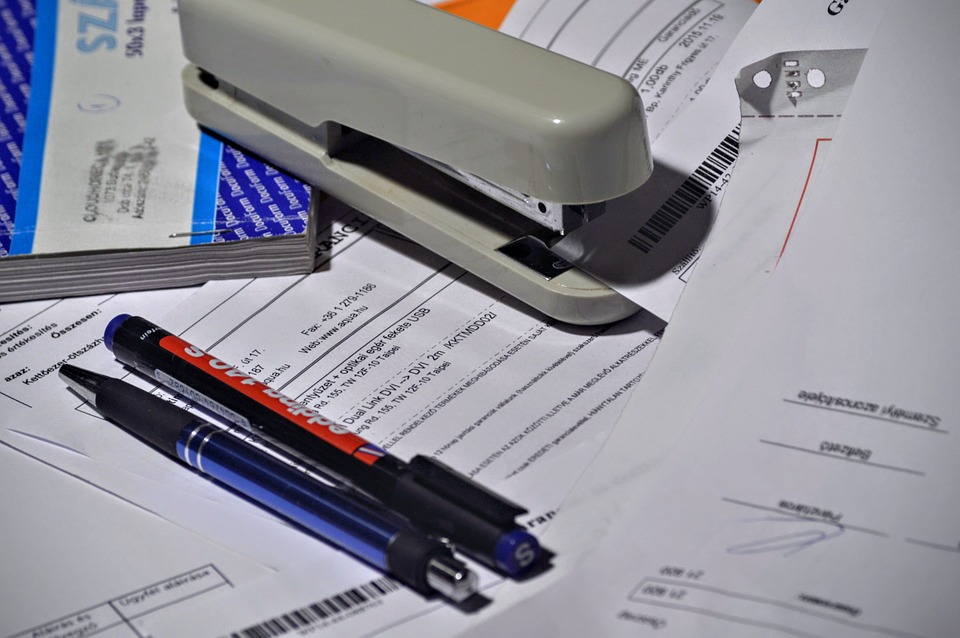
Creating a Delayed Charge Invoice in Quickbooks
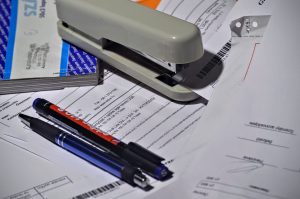 It’s not uncommon for business owners to invoice their customers or clients at different intervals. While some business owners collect payment during the transfer of the goods or services, others wait until later. When accepting payment after the delivery of goods or services, you should consider using a delayed charge invoice. As the name suggests, this special type of invoice “delays” the charge, allowing customers or clients to pay for their purchase at a later date. To learn more about delayed charge invoices and how to create them using the Quickbooks accounting software, keep reading.
It’s not uncommon for business owners to invoice their customers or clients at different intervals. While some business owners collect payment during the transfer of the goods or services, others wait until later. When accepting payment after the delivery of goods or services, you should consider using a delayed charge invoice. As the name suggests, this special type of invoice “delays” the charge, allowing customers or clients to pay for their purchase at a later date. To learn more about delayed charge invoices and how to create them using the Quickbooks accounting software, keep reading.
You can easily create a delayed charge invoice in Quickbooks Online — the cloud-based version of Intuit’s accounting software — by logging in to your account, clicking the (+) menu at the top of the screen and choosing “Delayed Charge” under the column for “Customers.” From here, you’ll need the select to whom you want send the delayed charge invoice. If the customer isn’t listed in your Quickbooks account, you’ll need to add him or her by clicking the “+Add new” button. While adding a new customer may sound tedious, you don’t have to enter all the information for the customer. Rather, creating a delayed charge invoice only requires you to enter the customer’s name. You can go back into your Quickbooks account later to update the customer’s other information.
After selecting the customer, Quickbooks will prompt you to enter a date for the purchased product or service. Keep in mind that this is not the “due date” for the invoice. This is the date on which the customer agreed to purchase the product or service. Double check the date to ensure it’s correct, at which point you can proceed to the next step. Next, you’ll need to enter the product or service that you sold to the customer. Like customers, Quickbooks allows you to select the product or service from a drop-down menu. And if the product or service isn’t listed in your Quickbooks account, you’ll need to add it by clicking the “Add” button.
You’re almost finished. Now comes the process of choosing an “Income Account” in the “Product or Service Information” field. Finally, enter a price for the product or service, followed by clicking “Save and Close” to complete the process. Once finished, you’ll have a delayed invoice ready for the customer or client.
Did this tutorial work for you? Let us know in the comments section below!

How to Record a Bounced Check Payment in Quickbooks
 When accepting checks as a form of payment for your business’s products or services, you run the risk of having the check bounce. If the customer doesn’t have enough funds in his or her bank account to cover the cost of the purchased product or service, the check will bounce. Typically known as non-sufficient funds (NSF), it’s a common occurrence encountered by countless businesses. To prevent a bounced check from negatively impacting your business’s financial records, though, you’ll need to record it. If you use Quickbooks, you can easily record a bounce check payment in just a few simple steps.
When accepting checks as a form of payment for your business’s products or services, you run the risk of having the check bounce. If the customer doesn’t have enough funds in his or her bank account to cover the cost of the purchased product or service, the check will bounce. Typically known as non-sufficient funds (NSF), it’s a common occurrence encountered by countless businesses. To prevent a bounced check from negatively impacting your business’s financial records, though, you’ll need to record it. If you use Quickbooks, you can easily record a bounce check payment in just a few simple steps.
Bounced Check Feature
Quickbooks Desktop actually has a bounced check feature that’s designed specifically for recording bounced check payments. To use this feature, log in to your Quickbooks account and click Customers > Customer Center > Transactions > Received Payments. From here, you’ll see a list of all payments that your business has received. Scroll through the list until you see the payment associated with the bounced check, at which point you can double-click it to record it as an NSF.
There are a few more steps to recording a bounced check using this feature, however. Once you’ve marked the customer’s payment as an NSF, you’ll need to access the “Receive Payments” window, from which you can click the “Record Bounced Check” option. Keep in mind that you can only record a bounced check if the check is not waiting to be cleared. Rather, this feature is only available to checks that have been cleared by the respective bank, even if the clearing resulted in an NSF.
Manually Recording Bounced Check
You can also record a bounced check payment in Quickbooks manually. This is a slightly more tedious process, but it’s still a viable solution for handling these bad payments. To record a bounced check manually, you’ll need to create an account as well as an item to track the NSF. Next, you must record the NSF that your business incurred from its bank. Finally, you can reverse the customer’s original payment so that it doesn’t affect your accounting records. While optional, you can also send the customer an invoice for the NSF fee charged by your bank. If you don’t send a customer an invoice for this fee, your business will incur this expense, which is usually around $30 or $40.
Did this tutorial work for you? Let us know in the comments section below!
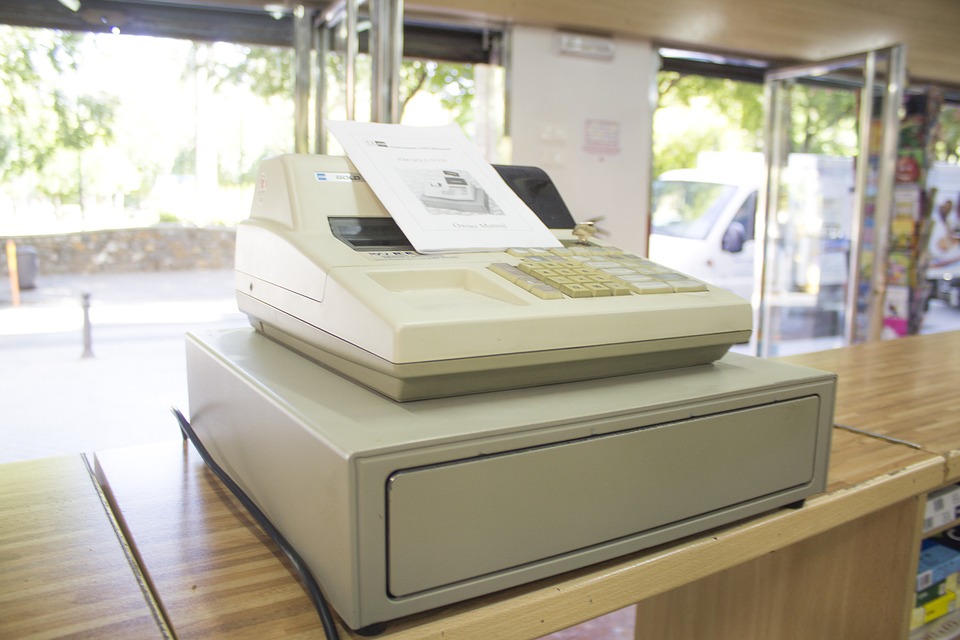
How to Record Cash Sales in Quickbooks
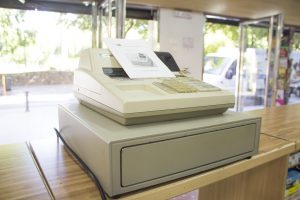 In recent decades, credit cards have become the preferred method of payment among consumers. When buying a product or service, most consumers prefer to pay using a credit card. But while it’s the most common type of payment, it’s not the only option available for consumers. Many consumers still pay using cash. As a business owner, you must properly record these cash sales so that they won’t throw off your financial records. Using the Quickbooks accounting software, you can easily record cash sales in just a few simple steps.
In recent decades, credit cards have become the preferred method of payment among consumers. When buying a product or service, most consumers prefer to pay using a credit card. But while it’s the most common type of payment, it’s not the only option available for consumers. Many consumers still pay using cash. As a business owner, you must properly record these cash sales so that they won’t throw off your financial records. Using the Quickbooks accounting software, you can easily record cash sales in just a few simple steps.
Handling cash transactions in Quickbooks requires a different approach than credit card, debit card and check transactions. When you receive payment from a customer, you typically record the payment immediately when you receive payment. If a customer pays using cash, however, you can wait until the end of the day to record the payment. This involves creating a Sales Receipt template for each day during which you received at least one cash payment from a customer.
To create a Sales Receipt template in Quickbooks, you’ll also need to create a Products/Services with various account types, including sales category, sales tax, overage/underage and cash. Basically, you want to record all of the sales as positives and all the cash payments that you’ve received from customers as negatives. At the end of the day, you can compare these numbers to ensure that the balance equals zero. The total amount of your positives should be the same as your negatives. If your positives for the day are higher than your negatives, this indicates an underage — meaning your cash register is short and you didn’t receive all the payments from your customers for the day.
A typical sales receipt in Quickbooks lists the sales amount, sales tax and cash payment. The sales amount and sales tax are positive, whereas the cash payment amount is negative. When you add the items together, they should equal zero. If it’s not zero, you made an error and should go back to try and identify it.
After creating a sales receipt, go back to your Quickbooks account and access the “Undeposited Funds” section, at which point you can record the deposit amount. This, of course, is the amount of money from the cash payment that you deposited into your back account. For more help on creating recurring templates, including Sales Receipt templates, in Quickbooks, check out this Intuit article.
Did this tutorial work for you? Let us know in the comments section below!
